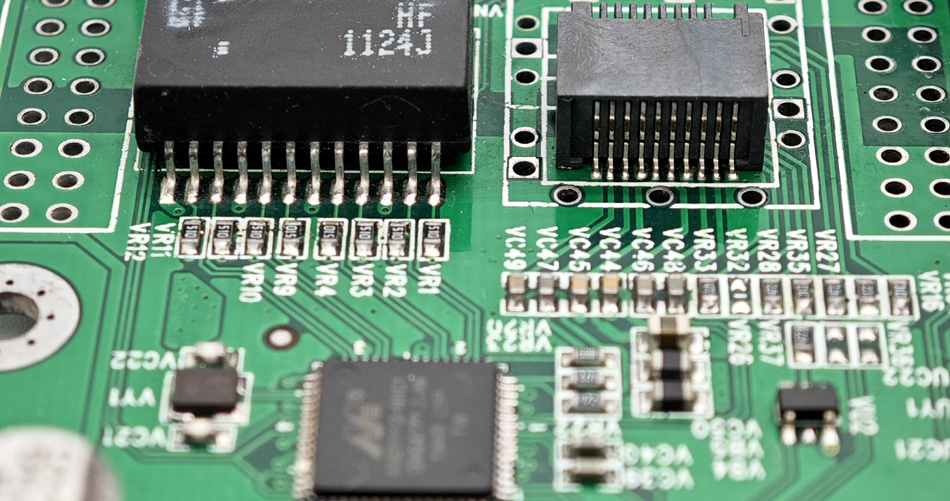- English
- Español
- Português
- русский
- Français
- 日本語
- Deutsch
- tiếng Việt
- Italiano
- Nederlands
- ภาษาไทย
- Polski
- 한국어
- Svenska
- magyar
- Malay
- বাংলা ভাষার
- Dansk
- Suomi
- हिन्दी
- Pilipino
- Türkçe
- Gaeilge
- العربية
- Indonesia
- Norsk
- تمل
- český
- ελληνικά
- український
- Javanese
- فارسی
- தமிழ்
- తెలుగు
- नेपाली
- Burmese
- български
- ລາວ
- Latine
- Қазақша
- Euskal
- Azərbaycan
- Slovenský jazyk
- Македонски
- Lietuvos
- Eesti Keel
- Română
- Slovenski
- मराठी
- Srpski језик
Low temperature soldering technology in PCBA processing
2024-07-21
PCBA processing (Printed Circuit Board Assembly) is a crucial step in the manufacturing process of electronic products. With the increasing miniaturization, functional integration, and environmental requirements of electronic products, the application of low-temperature soldering technology in PCBA processing has become more and more widespread. This article will explore the low-temperature soldering technology in PCBA processing, introducing its advantages, processes, and application areas.

The advantages of low-temperature soldering technology
1. Reduce thermal stress
The melting point of the solder used in low-temperature welding technology is relatively low, usually between 120 ° C and 200 ° C, which is much lower than that of traditional tin lead solder. This low-temperature welding process can effectively reduce the thermal stress on components and PCBs during the welding process, minimize thermal damage, and improve product reliability.
2. Save energy
Due to the low working temperature of low-temperature welding technology, the required heating energy is relatively small, which can significantly reduce energy consumption, reduce production costs, and also meet the requirements of green manufacturing and energy conservation and emission reduction.
3. Adapt to temperature sensitive components
Low temperature welding technology is particularly suitable for temperature sensitive components, such as some special semiconductor devices and flexible substrates. These components are prone to damage or performance degradation in high-temperature environments, while low-temperature soldering can ensure that they are soldered at lower temperatures, ensuring their functionality and lifespan.
Low temperature soldering process
1. Selection of Low Temperature Solder Materials
Low temperature welding technology requires the use of low melting point solder. Common low-temperature solder materials include indium based alloys, bismuth based alloys, and tin bismuth alloys. These solder materials have excellent wetting properties and low melting points, which can achieve good welding results at lower temperatures.
2. Soldering equipment
Low temperature welding technology requires the use of specialized welding equipment, such as low-temperature reflow soldering furnaces and low-temperature wave soldering machines. These devices are capable of precise temperature control, ensuring temperature stability and uniformity during the welding process.
3. Soldering process
Preparation work: Before welding, it is necessary to clean the PCB and components to remove surface oxides and dirt to ensure welding quality.
Solder paste printing: Using low-temperature solder paste, it is applied onto the solder pads of the PCB through screen printing.
Component mounting: Place the components accurately on the solder pads, ensuring correct position and orientation.
Reflow soldering: Send the assembled PCB into a low-temperature reflow soldering furnace, where the solder melts and forms firm solder joints. The entire process is temperature controlled within a low temperature range to avoid thermal damage to the components.
Quality inspection: After welding is completed, the quality of the solder joints is inspected through methods such as AOI (Automatic Optical Inspection) and X-ray inspection to ensure good welding results.
Application Area
1. Consumer Electronics
Low temperature welding technology is widely used in consumer electronics products, such as smartphones, tablets, smart wearables, etc. These products have high thermal sensitivity to components, and low-temperature welding can effectively ensure their welding quality and product performance.
2. Medical Electronics
In medical electronic devices, many components are highly sensitive to temperature, such as biosensors, microelectromechanical systems (MEMS), and so on. Low temperature welding technology can meet the welding requirements of these components, ensuring the reliability and accuracy of the equipment.
3. Aerospace
Aerospace electronic equipment requires extremely high reliability and stability. Low temperature welding technology can reduce thermal damage during the welding process, improve equipment reliability, and meet strict requirements in the aerospace industry.
Summary
The application of low-temperature welding technology in PCBA processing is increasingly receiving attention from the industry due to its advantages of reducing thermal stress, saving energy, and adapting to temperature sensitive components. By selecting low-temperature solder materials reasonably, using specialized welding equipment and scientific welding processes, high-quality and low-cost welding effects can be achieved in PCBA processing. In the future, with the continuous advancement of electronic product technology and the increasing environmental requirements, low-temperature welding technology will be widely applied in more fields, bringing more opportunities and challenges to the electronic manufacturing industry.
-
Delivery Service






-
Payment Options









